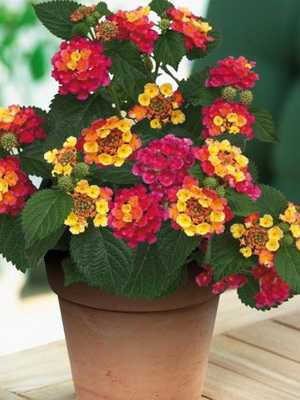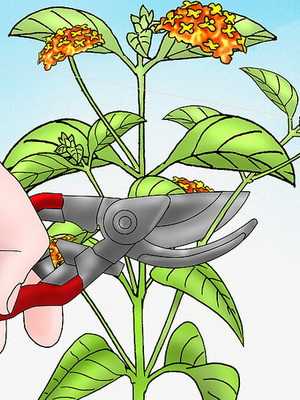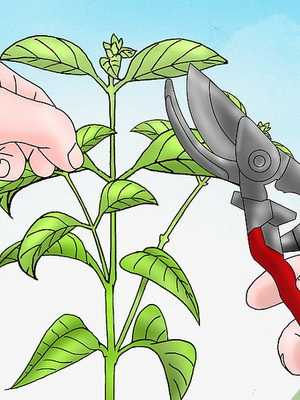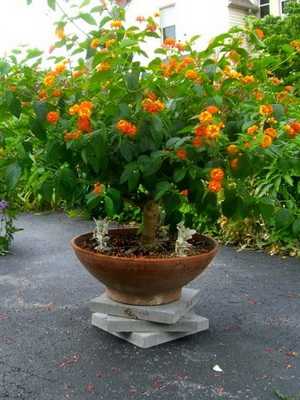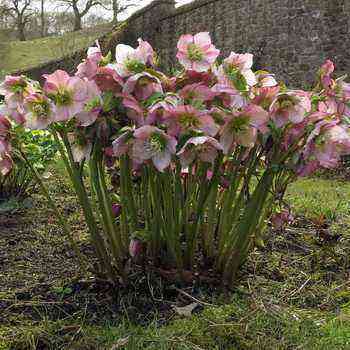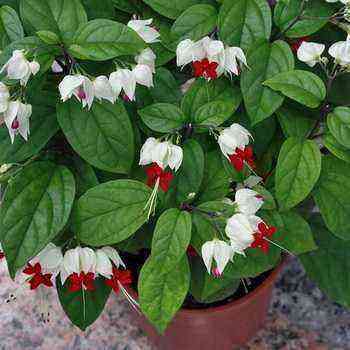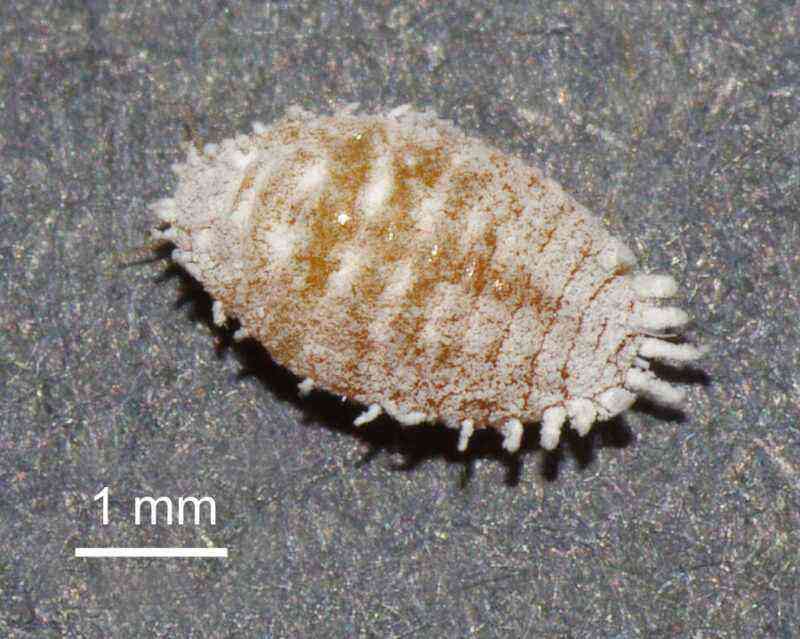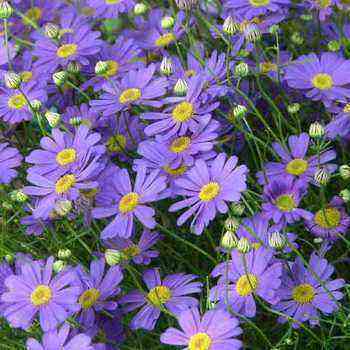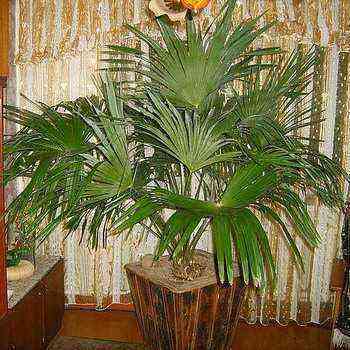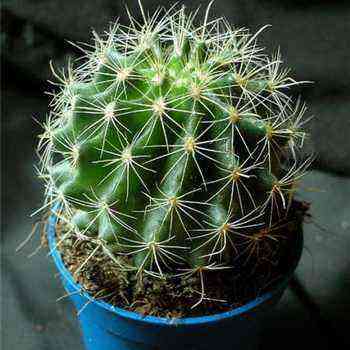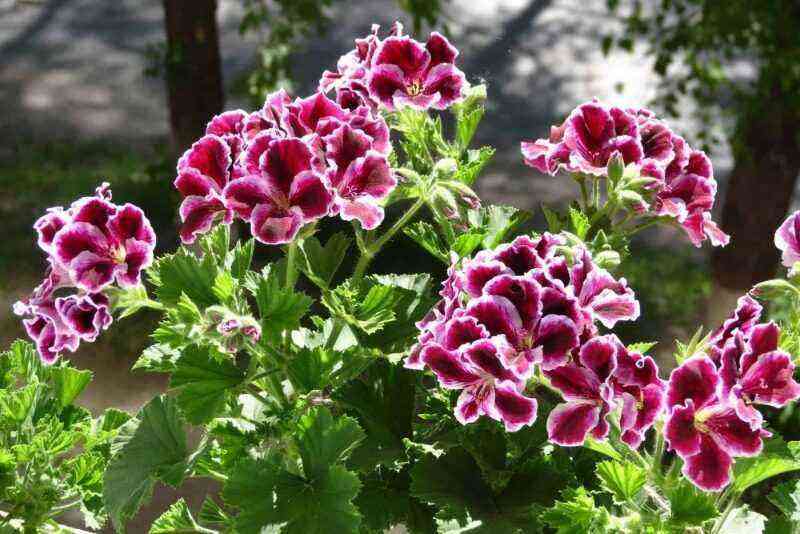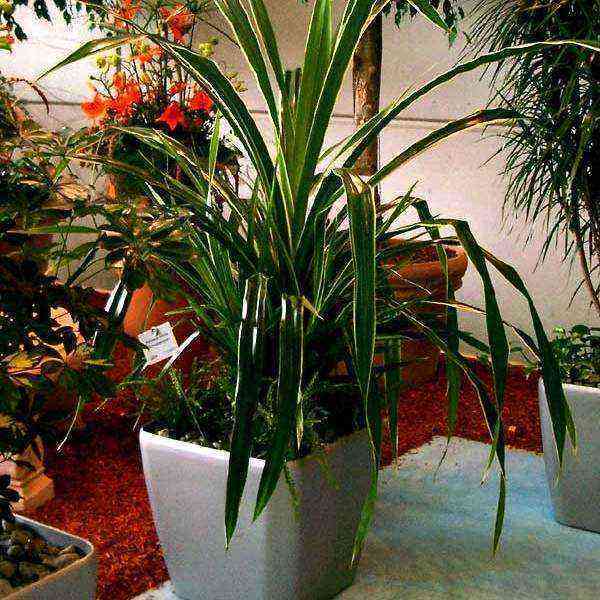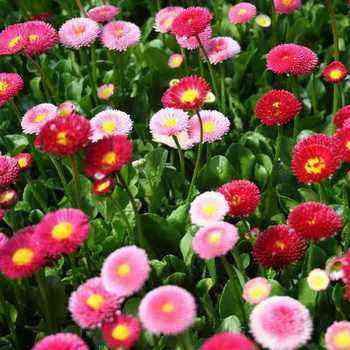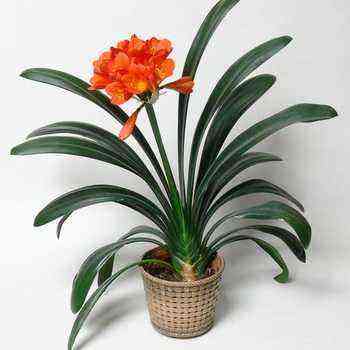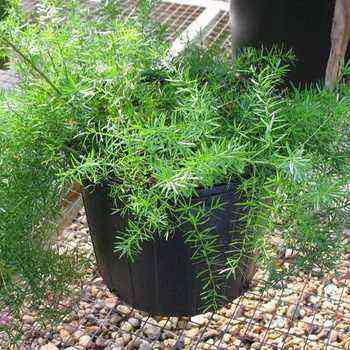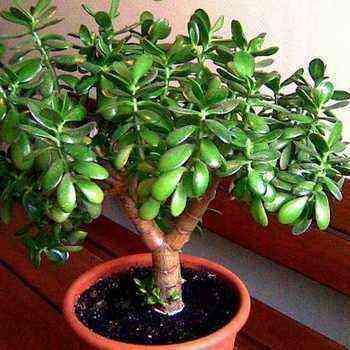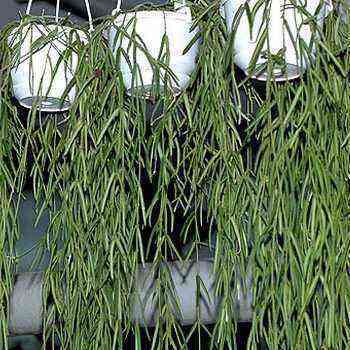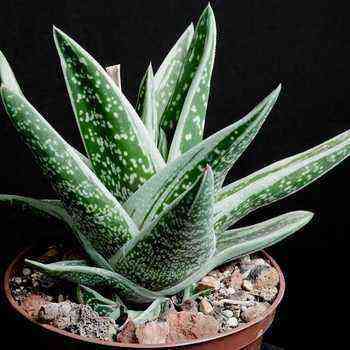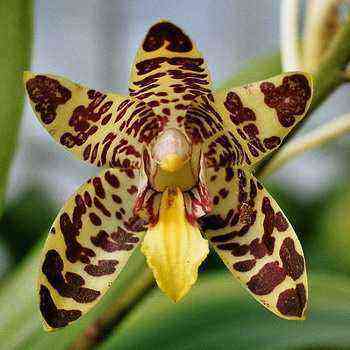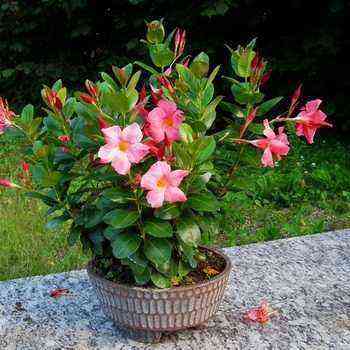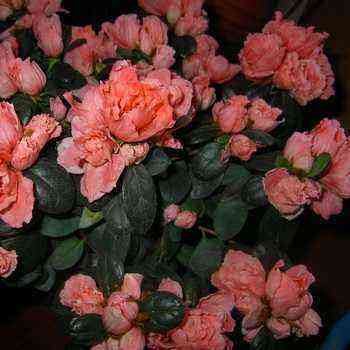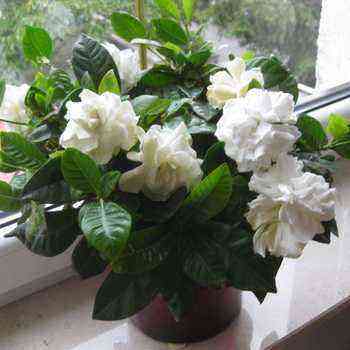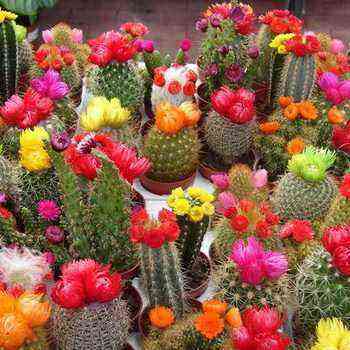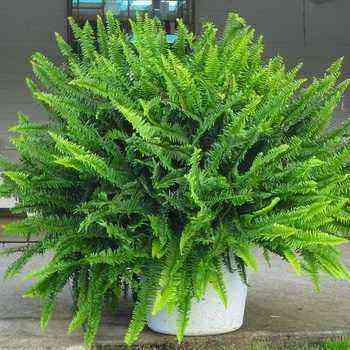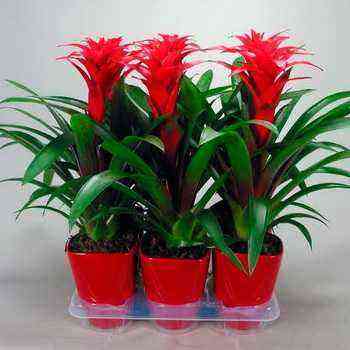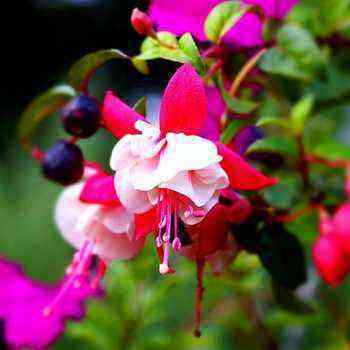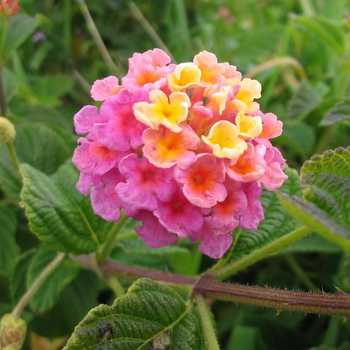
Lantana (Lantana) belongs to the Verbenaceae family. Under natural conditions, it grows in the tropics and subtropics of America, Africa, Asia.
Although there are about 150 species of lantana in nature, which grows mainly in the tropics of America and Africa, only vaulted, or prickly lantana, and its hybrids with other American species, are grown in room culture.
Lantana is often called prickly because its erect tetrahedral stem is covered with small thorns. In India, for its violent, indomitable growth, lantana was nicknamed the “curse of the planters.” Its impenetrable thickets surround both suburbs and central squares. Literally everything is shrouded in spectacular, sometimes white-purple, sometimes bright yellow clouds of lantana flowers, exuding a pleasant spicy aroma.
Description of room lantana
Lantana grown in the house is a low (up to 1,5 m) flowering evergreen shrub with branchy shoots, which looks great in hanging baskets and pots.
Look at the photo – the leaves of the lanthanum flower are tough, gray-green, up to 5 cm long, with a high content of essential oils:
They are opposite, ovoid, pointed at the end, with a serrate edge and fine pubescence along the veins. During the flowering period, lantana is covered with small flowers, collected in globular inflorescences, which are located in the axils of the stems. Lantana flowers are similar in description to phlox flowers and have different colors. They can be orange, white, yellow, pink, lilac, red, collected in umbrella-shaped inflorescences. After flowering, the plant sometimes sheds its leaves and a dormant period ensues. In the spring, lantana is covered with young green leaves.
Flowering time: spring – summer – autumn. Under good conditions, it blooms almost all year round.
Currently, many dwarf and semi-dwarf lantana hybrids have been bred.
The indoor lanthanum flower has an interesting and very attractive property – during flowering, the color of the inflorescences changes from yellow to purple.
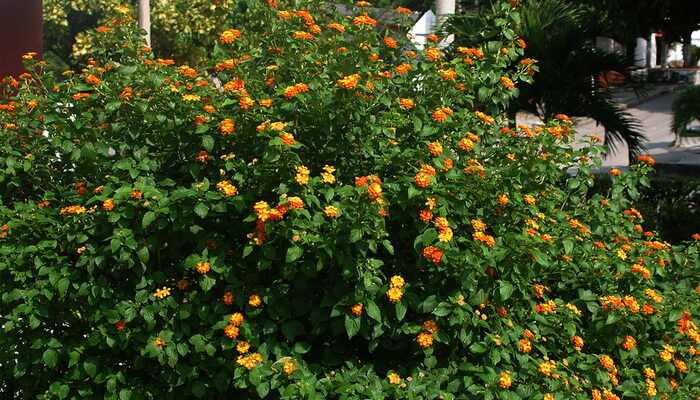
At home, one type is used – lantana prickly (L. sataga) and many hybrids, united under one name ‘Kamara’ (‘Samaga’).
Growing hybrid lantana

Lantana hybrid (Lantana hybrida hort.) – a plant of the Verbenov family. Homeland: South America.
Appearance and structure: ornamental shrub 70–80 cm tall. The flowers are collected in an umbrella inflorescence, at first they are yellow, then orange-red. The leaves are wrinkled, the stems are tetrahedral.
Reproduction: herbaceous cuttings.
Features of the content: the plant is light and thermophilic. In winter, this indoor lantana sheds its leaves. During this period, she is kept in a cool room. In the spring, when the plants start to grow, the long shoots are shortened and give the bush a certain shape. In the summer they are kept on a sunny ventilated window, in boxes outside the window, on the balcony. When caring for a flower, lantana is watered with a fertilizer solution once a month. Young shoots are used for cuttings at a temperature of + 20-25 ° C. Rooted cuttings are planted in a pot with a diameter of 7 cm. The soil mixture consists of leafy, humus earth and sand (1: 1: 1). It works well in hydroponic culture. Lantana is used for rooms, balconies and windows.
Lantana flower care at home (with photo)
Difficulty growing a lanthanum flower: medium, it is a relatively unpretentious plant.
Accommodation. Lantana prefers to grow in the sun, loves fresh air. For the winter, lantana should be transferred to a cool (14-16 ° C) bright room. Does not require high humidity, but needs to be sprayed. In a room with dry air, it is advisable to spray the plants more often. When caring for lantana, you should avoid getting the inflorescences wet.
Optimal location: southern exposure. In summer, it feels good in the garden, patio or balcony.
The substrate is sod and leafy soil, humus with the addition of sand (2: 1: 1: 0,5).
Pruning. During home care, lantana needs pinching and pruning of the tops and faded shoots. After flowering, long shoots are cut off in order for the plant to branch beautifully.
In addition, formative pruning is done in the spring. You can safely experiment with the methods of forming lantana: the plant is very plastic, and if desired, a fluffy bush, a standard tree, and an ampel plant work equally well.
Watering, spraying: Moderate watering is required most of the year. In spring and summer, they are watered abundantly, but it is taken into account that the plant does not tolerate stagnant water at the roots.
After the development of buds and the beginning of flowering, lantana should be fed 2-3 times a month with liquid fertilizers for flowering plants.
Young plants are transplanted annually in early spring, adults – once every 2-3 years.
Breeding. Cuttings (in August) and seeds (in February or early spring).
Reproduction is most often carried out by semi-lignified cuttings, which are cut in August from the shoots of the current year. The cuttings should be about 10 cm long, with a couple of the lower leaves removed. Cuttings are planted in pots of wet peat in a greenhouse or under a jar, which is periodically raised for airing.
Pests and diseases. There are no particular problems when growing a lanthanum flower, but when spraying, you should avoid getting the inflorescences wet. With high humidity or waterlogging, lanthanum can be affected by fungal diseases, so you should periodically loosen the soil in the pot.
Too dry and hot air contributes to the defeat of spider mites and scabbards.
The period of normal development of lantana is about two to three years, after which the plant needs to be changed.
Attention! Lantana fruits are poisonous.
These photos show proper care when growing lantana at home:
